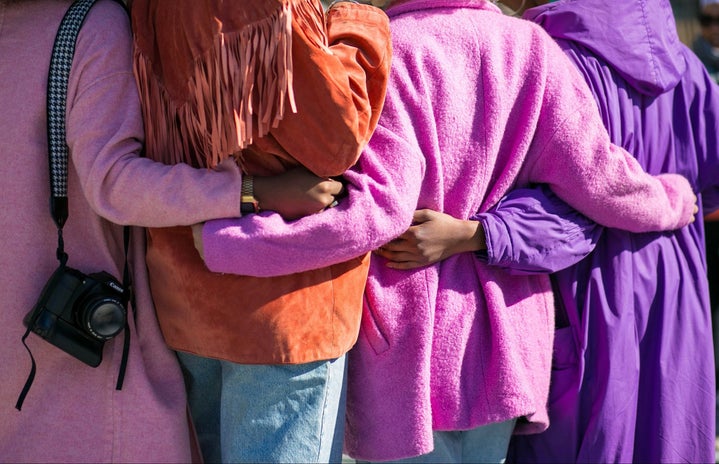In this, the month of love, society grows in its appreciation for the color pink. Pink has one day in the year to shine despite its controversial hold on society. Deemed as a feminine color, by Americans and Europeans that is, pink was not always viewed like this; the perception of pink has been one of the most cyclical and highly scrutinized colors to date.
The color pink has origins tracing back to “ancient India and imperial China, as well as the upper echelons of 18th century European society.” Not only has pink been around for some time, but at its emergence, it was actually gender neutral and represented those of higher income status. At first, the color pink was exclusively available to those of wealth, as dyes were quite expensive to import, but as the color became more readily available through the production of cheaper plants and processing techniques, the societal view of pink begins to change from a gender neutral color to an exclusively feminine color, also embodying eroticism and sexuality.
Because of cheaper production, and therefore cheaper prices linked to the famous pink dye, the working class was able to better afford a pink look, making the color less appealing to the Western upper class. It is hard to pinpoint exactly when the link between femininity and pink occurs but Vogue credits the US first lady Mamie Eisenhower showcasing her pink inaugural dress in the 1950s. This signified the beginning of the end for gender neutral, status related pink.
This relationship between pink and femininity opened the door for hurtful stereotypes and portrayals. The famous movie Mean Girls depicts the stereotypical popular and malicious women who would dress in all pink attire. Mean Girls even produced the famous quote “on Wednesdays, we wear pink” which only furthered the connection between a high maintenance, ruthless, and toxic feminine trope. Legally Blonde is yet again another movie that depicts another such character trope, Elle Woods, with toxic femininity and ditzy characteristics, who also bases her personality around all things pink.
Not only has pink been depicted in the satire of women in the entertainment industry, but history has further proven that pink has become almost synonymous with sexuality. Pink was a way to identify members of the LGBTQ+ community in Nazi Germany and “in France, AIDS was sometimes referred to as “the pink plague.” What was once a gender neutral and adored color has become the weapon to exploit others.
A lot of this speculation towards the color pink is merely a projection of Western society’s view on the color. In more modern times, pink “has become internationally synonymous with the fight against breast cancer” and “female protestors have been wearing pink to signify ownership of their sexual, reproductive and social rights.” Pink has had a rollercoaster of perception, some good, and some bad, but in recent culture, pink has begun to signify more than just its past hurtful connotations.


